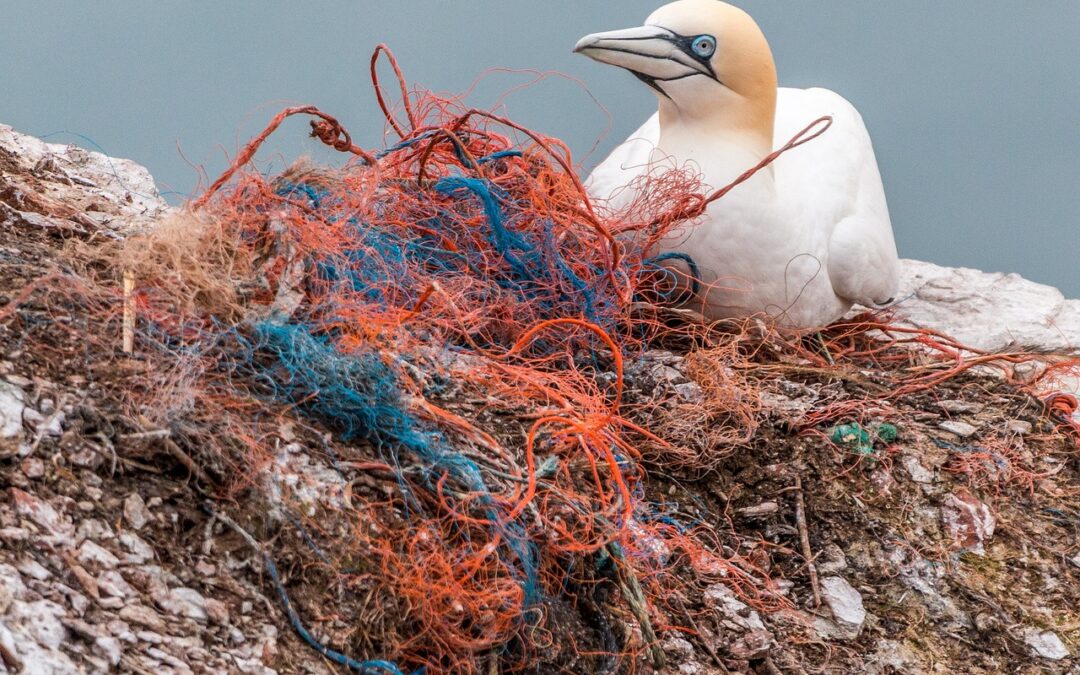Picture from pixabay.com.
In a world where the quest for sustainable alternatives is more pressing than ever, one product that has received much attention is biodegradable plastics made of seaweed. From edible cups, plastic bags, food containers, sachets, and gel pods, the opportunities seem limited only by our imagination. So, can seaweed bioplastics be the answer to our plastic problem? Below we explore the potential of seaweed in creating bioplastics, a promising solution that could redefine how we produce and dispose of everyday materials.
Why the Need & What Is Bioplastics
It is well known that plastic pollution is a global problem, not just for polluting our oceans but also for accumulating in landfills and the natural environment. But how does it get there? Petroleum-based plastics do not break down but break up into microplastics, and from there, take thousands of years to degrade completely. We are, of course, also a part of the problem with our throw-away culture and use of single-use plastics. As we work to find solutions to our environmental challenges, it is clear that we need to rethink our reliance on traditional plastics made from fossil fuels. However, petroleum plastics have not only done bad things. It has enabled us to create products that have saved lives, such as medical devices, pharmaceutical materials, and helmets, as well as change our world with the development of electronics such as computers and mobile phones. Hence, the solution might not be to stop using plastics all at once but to find alternatives. This is where bioplastics come into the picture. Bioplastics are defined as plastics made entirely or partially from biomass sources (e.g., wood chips, vegetable oils, corn starch, etc.) and have identical functions to petroleum-based plastics (Mekonnen et al., 2013). Many people also like to add the term biodegradable when talking about plastic materials made from seaweed; this means they can break down over time, reducing their environmental impact.
How Do You Make Biodegradable Plastics From Seaweed?
Compared to petroleum-based plastics, bioplastics deteriorate more quickly in nature, are not toxic, provide energy savings during production, require less space for the wastes produced, and reduce fossil fuel consumption and the amount of greenhouse gasses emitted (Aragão and Turan, 2022). As mentioned above, bioplastics can be produced from many biomaterials, including seaweed. Seaweeds are particularly promising for making bioplastics as they can form films, and they also have many benefits, such as growing in seawater instead of freshwater, being abundant, and providing high yields (Lim et al., 2021). There are many methods for creating bioplastics from seaweed, but the first step is always to obtain seaweed harvested from the ocean. There are thousands of seaweed species with distinct characteristics, so the type harvested and the method used will vary.
The most common way to produce seaweed bioplastics is to extract a substance called alginate from the seaweed. Alginate is a natural polymer found in brown algae’s cell walls, the most common type of seaweed in the UK, and acts as the main building block for the bioplastic. Next, the alginate is combined with other natural ingredients like glycerol, which helps make the bioplastic flexible, and water. Sometimes, additional substances may be added to enhance the bioplastic’s properties. The mixture is then shaped into the desired form, whether it is sheets, films, or specific product shapes. The formed bioplastic is left to dry and set. During this process, the water content decreases, and the bioplastic solidifies. Once the bioplastic is dry and stable, it is ready to go!

Fucus on rocks. Picture taken by Dr Elisa Capuzzo, Cefas.
An Example From Norfolk
The Norfolk-based company Roll Materials specialises in working with companies who manufacture or work with bio-, coated and self-adhesive materials and is interested in using locally sourced seaweed to develop products that can help lower emissions. Presently, they are looking at creating a mulch film to replace the current low-density polyethene film used in farming. Using seaweed to develop this product instead of petroleum-based plastics would prevent the introduction of polyethene to the environment, which could have detrimental effects on agricultural systems if not managed properly.
A Step Closer to a Plastic-Free Future
In conclusion, seaweed-based bioplastics offer a great alternative to petroleum-based plastics. They break down naturally, can be cultivated and harvested in the sea, and grow fast. So, can seaweed bioplastics be the answer to our plastic problem? Potentially, but for that to happen, we also need to scale up the current seaweed production to be able to create the volume of biomass necessary to produce enough bioplastics to replace petroleum-based plastics once and for all!
Interested in learning more about the many uses of seaweed? Have a look at our webpage for further blogs, useful links and project updates!
This blog was written with great help from Dr Elisa Capuzzo, SEA project contributor and Senior Marine Ecosystem Scientist at Cefas.
References:
1. Mekonnen, T., Mussone, P., Khalil, H. and Bressler, D. (2013). Progress in bio-based plastics and plasticizing modifications. Journal of Materials Chemistry A, [online] 1(43), p.13379. doi:https://doi.org/10.1039/c3ta12555f.
2. ARAGÃO REBOUÇAS JÚNIOR, J.S. and TURAN, G. (2022). Biodegradable Plastic and Film Production from Seaweeds. Bulletin of Biotechnology. doi:https://doi.org/10.51539/biotech.1033959.
3. Lim, C., Yusoff, S., Ng, C.G., LIM, P.E. and Ching, Y.C. (2021). Bioplastic made from seaweed polysaccharides with green production methods. Journal of Environmental Chemical Engineering, [online] 9(5), p.105895. doi:https://doi.org/10.1016/j.jece.2021.105895.
For more information about how you can create degradable bioplastics from seaweed, see the following review – Shravya, S.C., Vybhava Lakshmi, N., Pooja, P., Kishore Kumar, C.M. and Sadashiva Murthy, B.M., 2021. Seaweed a sustainable source for bioplastic: A review. International Research Journal of Modernization in Engineering Technology and Science, 3(7).


